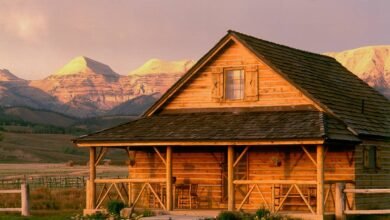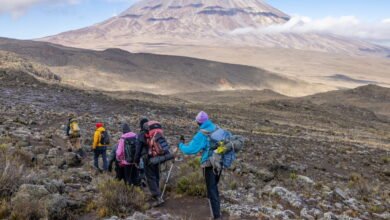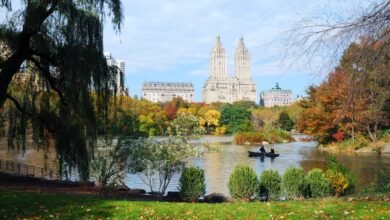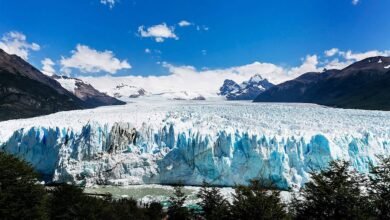Introduction
A spectacular wilderness retreat nestled away in the heart of the Canadian Rockies is Banff National Park. The beautiful scenery, diverse wildlife, and irresistible attractions of this Park will all be covered in this essay. Banff National Park is the perfect destination. Whether you enjoy outdoor activities, appreciate nature, or both, seek tranquillity amidst stunning surroundings.
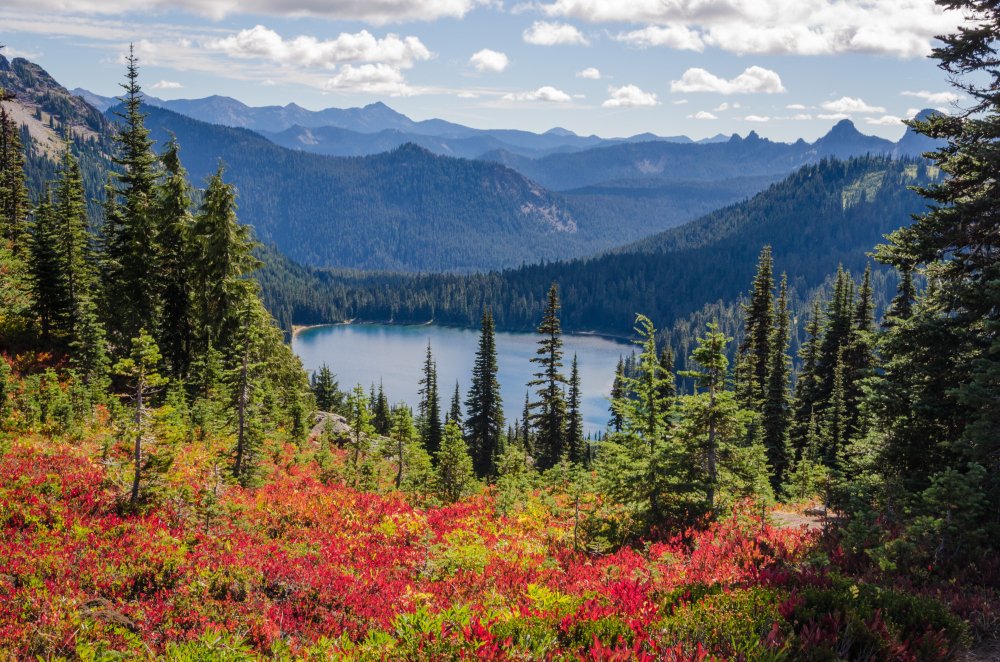
Location and Overview
Situated in Alberta, Canada, Banff, The National Park, The country’s oldest national Park, was established. 1885 The area covered is more than 6,641 square kilometers or 2,564 square miles. The Park boasts a diverse ecosystem comprising pristine forests, towering mountains, glaciers, and glacial lakes. It’s dramatic landscapes and abundant wildlife make it a haven for photographers, hikers, and nature enthusiasts.
Flora and Fauna of Banff National Park
Banff National Park is domestic to diverse plant and animal species. Spruce, pine, fir, and aspen bushes are only some of the numerous plant species that can be located withinside the Park’s complicated ecology. The meadows are blanketed with lovely sun sunglasses of wildflowers withinside the spring and summer. Numerous distinctive animal species can be determined within the Park, including elk, deer, bighorn sheep, mountain goats, black bears, and grizzly bears. Ospreys, bald eagles, and numerous more excellent avian species may also be visible using birdwatchers.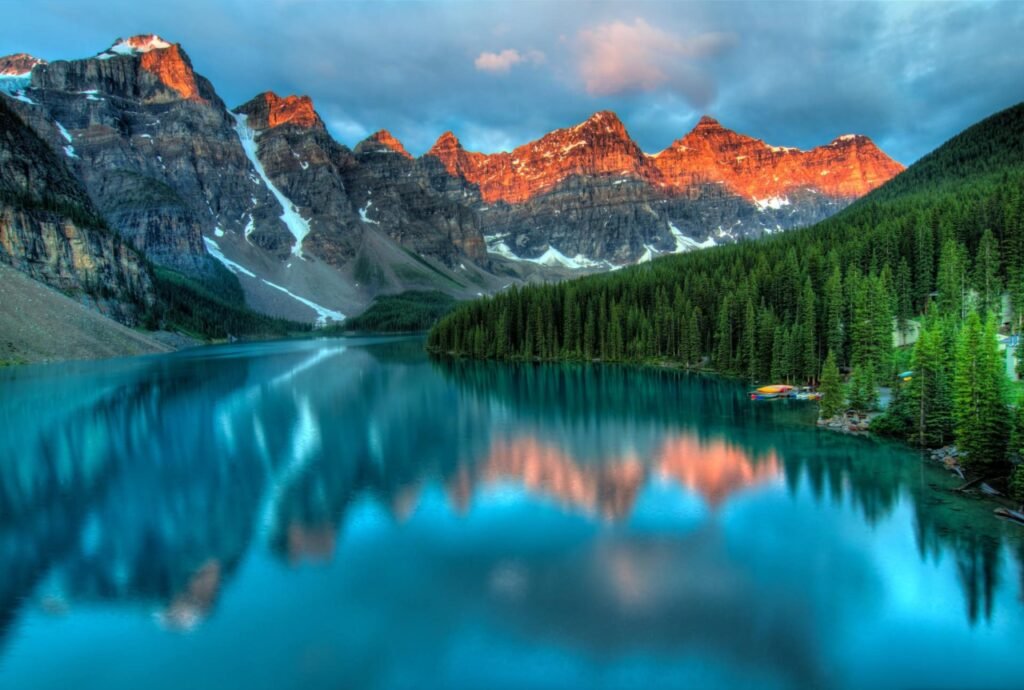
Popular Attractions in Banff National Park
Numerous attractions in Banff National Park will enthrall tourists of all ages. A sight to behold is the famous Lake Louise, with its azure waters encircled by snow-capped hills. The beautiful glacially-fed waters of Moraine Lake offer a similarly mesmerizing experience. The Athabasca Falls, Johnston Canyon, and the Columbia Icefield are a few more well-known sites highlighting the Park’s natural splendors.
Outdoor Activities in Banff National Park
For adventure seekers, Banff National Park presents a playground for outdoor activities. From hiking and mountaineering to canoeing and kayaking, there is something for everyone. In addition to giving probabilities for boating and fishing, the Park’s smooth lakes and rivers draw folks who like snowboarding and skiing in the winter. Popular outside interests encompass rock climbing, mountain biking, and horseback riding. Popular outdoor leisure pursuits. Famous for those seeking an adrenaline rush.
Hiking Trails in Banff National Park
Banff National Park boasts an extensive network of hiking trails catering to all skill levels. The Plain of Six Glaciers Trail offers a scenic journey to the Teahouse overlooking the vast glaciers—the Sulphur Mountain Trail rewards hikers. Views of the local area are beautiful, and you may find mountains and the town. For a more challenging adventure, the Sentinel Pass Trail takes you through alpine meadows and past stunning vistas.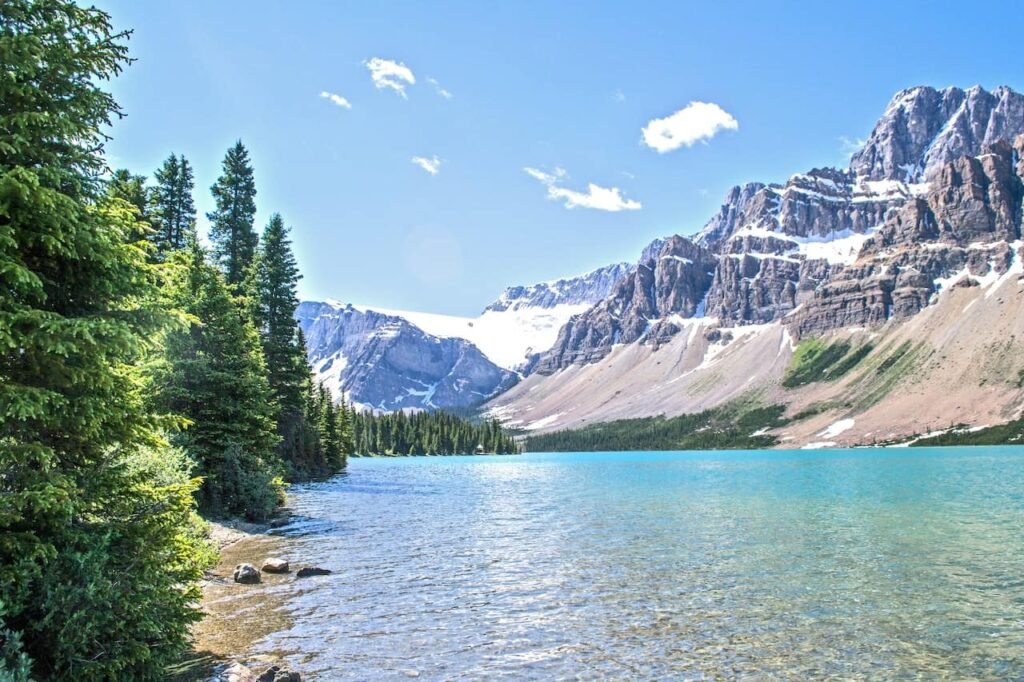
Wildlife Spotting in Banff National Park
Visits to Banff National Park are among their highlights is the opportunity to encounter its diverse wildlife. Watch out for bighorn sheep ascending steep outcrops, stately elk grazing in meadows, and hungry black bears. Keep a safe distance and follow the Park’s laws to ensure your and the wildlife’s safety.
Camping and Accommodation Options
To fully immerse yourself in the natural splendor of Banff National Park, camping is a popular choice. The Park offers a range of campgrounds, from primitive sites for backcountry adventurers to fully serviced sites for RV enthusiasts. For those seeking more comfort, numerous lodges, cabins, and hotels are available within and outside the Park.
Banff Townsite and Amenities
Visitors congregate at the Park’s Banff town, which is situated there. Restaurants, cafés, stores, and art galleries are just a few of the many facilities it provides. Explore the numerous quaint cafés along Banff Avenue, savor regional cuisine, or go souvenir shopping. The town offers a perfect blend of modern convenience and rustic charm.
Weather and Best Time to Visit
Banff National Park experiences distinct seasons, each offering its unique charm. Summer brings mild temperatures and longer daylight hours. It makes it a prime time for trekking and wildlife viewing. Fall showcases a vibrant display of autumn colors, while winter transforms the Park into a winter wonderland, perfect for snow sports enthusiasts. Spring brings the reawakening of nature, with wildlife sightings and blooming wildflowers. Plan your visit based on your preferred activities and the weather conditions that suit you best.
Environmental Conservation in Banff National Park
As a protected area, Banff National Park strongly emphasizes environmental conservation. The Park strives to preserve its delicate ecosystems through sustainable practices and initiatives. Visitors are urged to adhere to the Leave No Trace guidelines, respect wildlife, and stay on designated trails to minimize their impact on the Park’s fragile environment.
Tips for a Memorable Visit
We recommend taking specific steps to optimize your experience during your visit. Banff National Park, here are some helpful tips:
- Plan and book accommodations in advance, especially during peak seasons.
- For outdoor activities, pack the proper clothes and equipment.
- Carry bear spray and be knowledgeable about bear safety protocols.
- Stay hydrated and bring snacks for sustained energy during hikes.
- Respect wildlife and maintain a safe distance.
Conclusion
Banff National Park is a true natural gem, providing a calm retreat from the commotion of everyday life. Every tourist is guaranteed a fantastic experience because of the stunning scenery, a profusion of animals, and thrilling outdoor activities. Take in everything that Banff’s splendor has to offer. Visit the National Park and make lifelong memories.
FAQs for Banff National Park
How do I get to Banff National Park?
You can reach Banff National Park by flying into Calgary International Airport (YYC), the closest major airport. From there, it's a scenic 1.5-hour drive to the park.
What is the best time to visit Banff National Park?
The best time to visit Banff National Park depends on your preferences. Summer (June to August) offers pleasant weather and various outdoor activities. Fall (September to October) provides beautiful foliage colors. Winter (December to February) offers skiing and snowboarding opportunities. Spring (March to May) brings milder temperatures and wildlife sightings.
Can I camp in Banff National Park?
Yes, camping is a popular option in Banff National Park. The park offers various campgrounds with different amenities and facilities. Check the official Parks Canada website for campground availability, reservations, and guidelines.
Can I see wildlife in Banff National Park?
Yes, Banff National Park is home to a diverse array of wildlife. It's possible to spot animals such as elk, deer, bighorn sheep, black bears, grizzly bears, and even wolves. Remember to observe wildlife from a safe distance and follow Parks Canada's guidelines for wildlife viewing.




